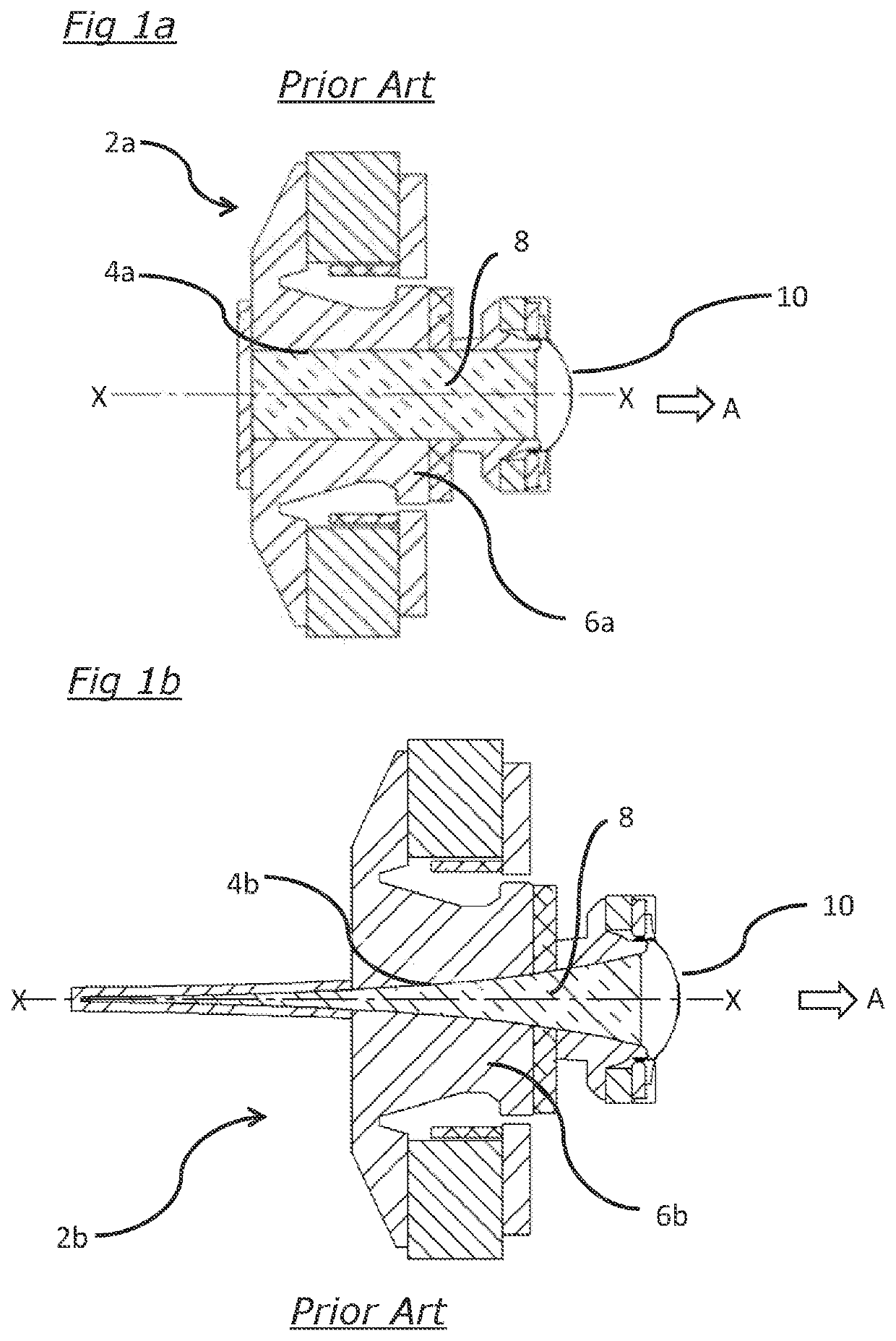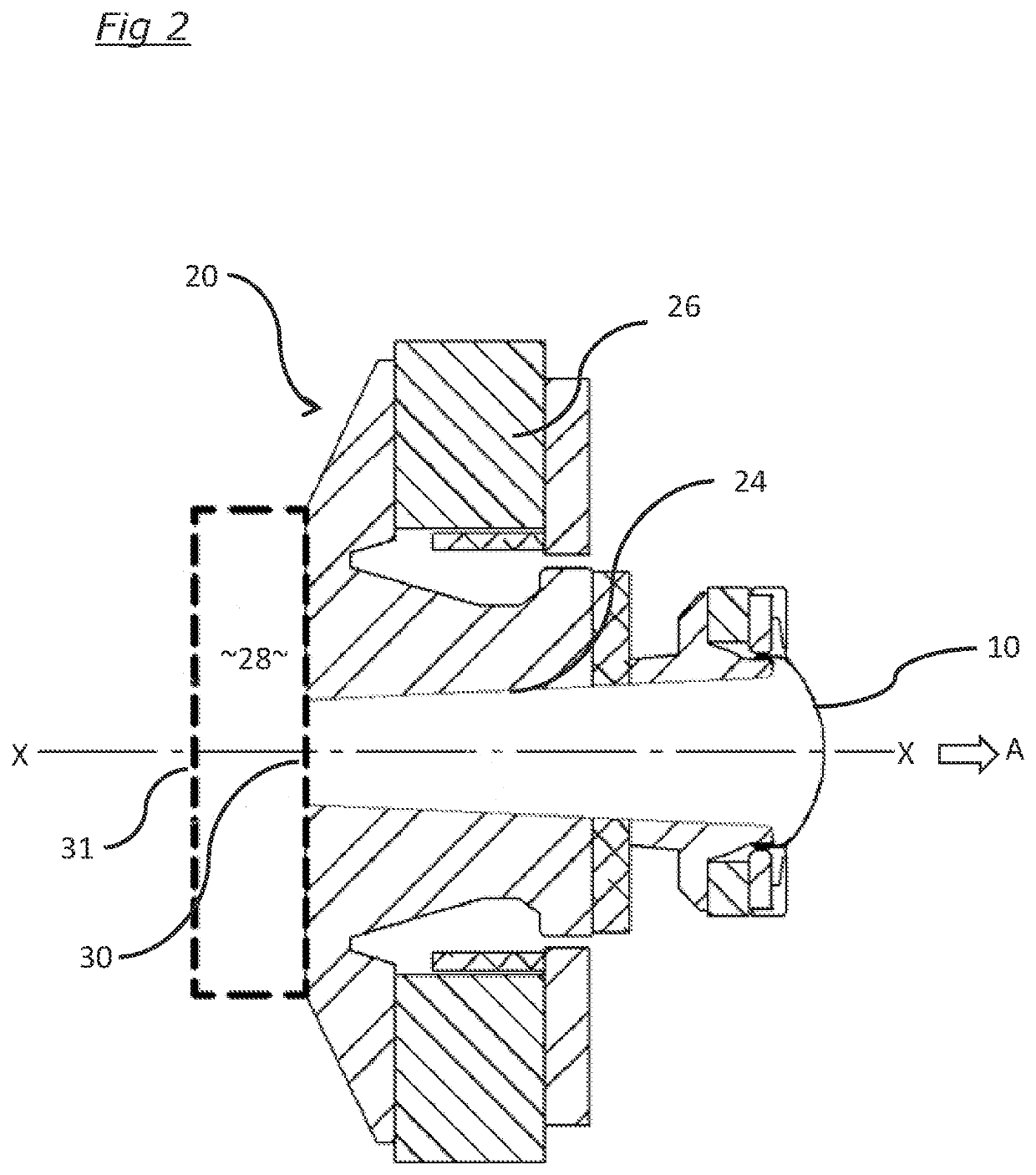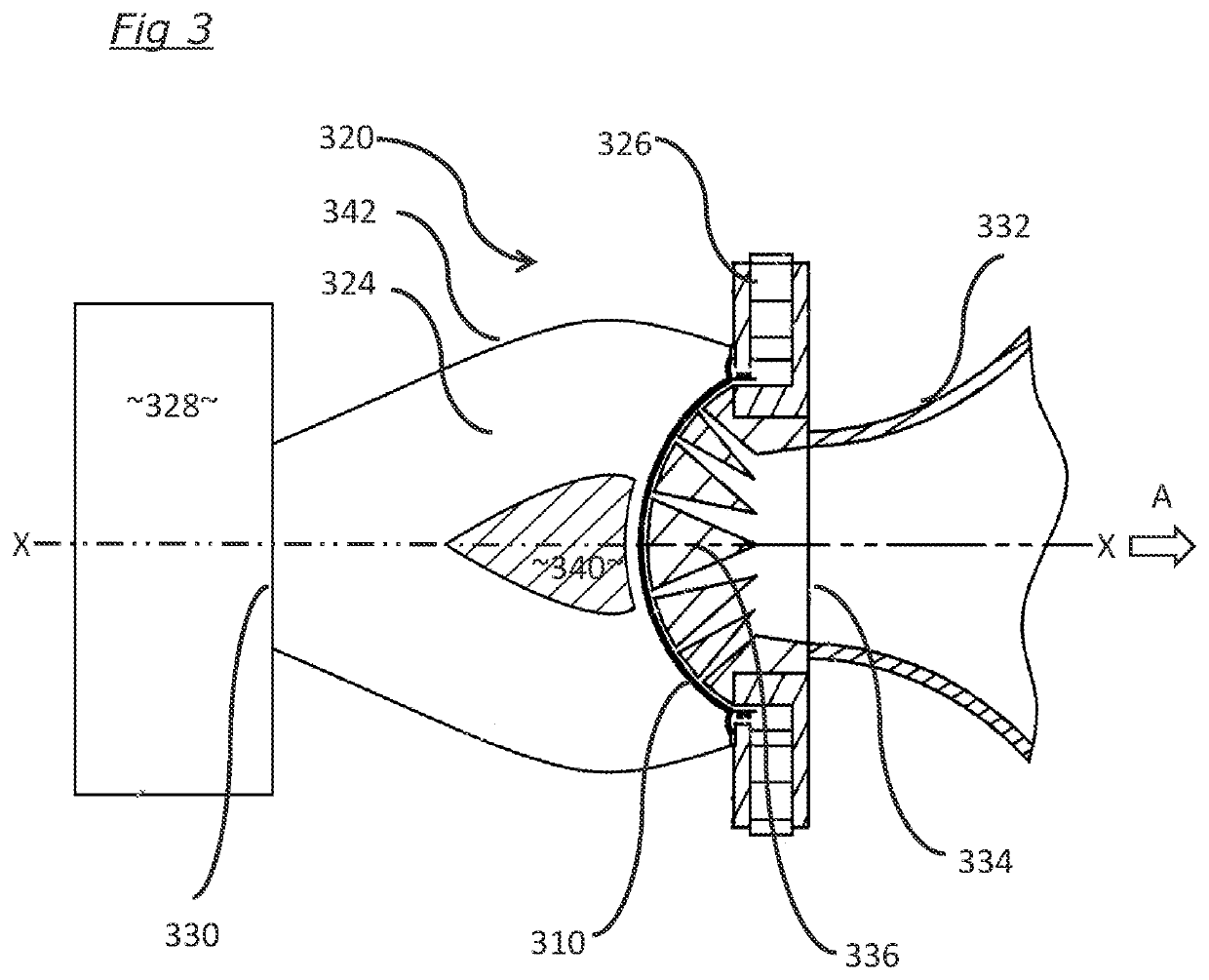Loudspeakers
a loudspeaker and axial length technology, applied in the field of loudspeakers, can solve the problems of complex manufacturing of such an arrangement, reducing the effectiveness of the absorber, and much more difficult design and manufacture of the metamaterial, so as to minimise the axial length of the loudspeaker and dissipate acoustic energy.
- Summary
- Abstract
- Description
- Claims
- Application Information
AI Technical Summary
Benefits of technology
Problems solved by technology
Method used
Image
Examples
Embodiment Construction
[0022]FIG. 1a shows a high-frequency driver with a 25.4 mm diameter diaphragm using a large central vent tube / duct filled with dense acoustical wadding. FIG. 1b shows a high-frequency driver with a 25.4 mm diameter diaphragm using a 120 mm long, exponentially tapering duct which is also filled with dense acoustical wadding.
[0023]FIG. 2 shows in cross-section a tweeter 20 forming part of a coaxial driver with a highly effective arrangement according to this invention. The conical duct 24 through the drive unit 26 connecting the 25.4 mm diameter diaphragm 10 to the front surface 30 of the acoustic metamaterial 28 results in a spherical contracting acoustical wave with radius 146.4 mm at the front surface 30 of the metamaterial 28. The characteristic acoustical impedance of this wave is a close match to the impedance of the metamaterial described in WO 2018 / 047153 when a design frequency of 600 Hz is used. The impedance match in this case is not perfect and only over a limited bandwidt...
PUM
 Login to View More
Login to View More Abstract
Description
Claims
Application Information
 Login to View More
Login to View More - R&D
- Intellectual Property
- Life Sciences
- Materials
- Tech Scout
- Unparalleled Data Quality
- Higher Quality Content
- 60% Fewer Hallucinations
Browse by: Latest US Patents, China's latest patents, Technical Efficacy Thesaurus, Application Domain, Technology Topic, Popular Technical Reports.
© 2025 PatSnap. All rights reserved.Legal|Privacy policy|Modern Slavery Act Transparency Statement|Sitemap|About US| Contact US: help@patsnap.com



